August 17
2017 August 17
Notice. In an earlier notice, because of my clumsy grammar, I may have given a quite erroneous impression to contributors that, in order to submit a photograph to this site, you must identify the insect you have photographed. Nothing could be further from my intent, and I hope no one has been deterred from submitting photographs because of this. All viewers are more than welcome to submit their photographs (or indeed just verbal observations with no photograph). Very often you may not know the name of the insect – in which case I shall endeavour (not always successfully) to find out what it is. What I do ask, however, is that, if you do happen to know the identity of the insect you have photographed (which is quite often the case), please let me know what it is, or what you believe it is, so that I don’t have to spend time identifying an insect whose identity you already know.
While on the subject of names, certain conventions are usually observed in the printing of scientific names. Please don’t think that you have to adhere rigidly to these – that is my job as Editor. I don’t want anyone to be put off by feeling that they have to go into all this minute detail. But, for those who are interested, I describe the conventions here – and I shall admit that it does save me a bit of editorial time when it is done right!
A scientific name has two parts, a genus (plural genera) and a species (plural species).
Thus the Painted Lady is Vanessa cardui. The name is customarily printed in italic.
The name of the genus always starts with a capital letter. The name of the species always starts with a small letter. No exceptions. At all. Ever. Hyphens, accents and other such marks are to be discouraged. Originally, scientific names were Latin. That is no longer strictly the case. Nevertheless it is preferred if scientific names at least look sort of Latin, and obey the rules of Latin grammar. The genus name for a common spider is Eratigena. That’s not Latin. It’s actually a meaningless anagram of another spider genus Tegenaria, though it does at least make some pretence of looking vaguely Latin. Another example: the noctuid moth species sulinaris is merely an anagram of a genuine Latin species name, insularis.
In any case, it is important always to check the exact spelling. A mere approximation to the spelling just won’t do!
Sometimes the species name is an adjective that qualifies the genus name, a noun. In that case it is important that the genus and species names agree in number and gender. However, it is not always the case that the two parts of the name are noun and qualifying adjective. They may, for example, be two nouns in apposition – in which case there is obviously no requirement for agreement in number and gender.
To be continued in a future posting… In the meantime, don’t worry about it. That’s the Editor’s job, and I’ll do my best to look after it. Now let’s get on with today’s contributions. Jeremy Tatum
Aziza Cooper writes: At McIntyre Reservoir, I saw two sulphurs yesterday, August 16, and I have a photo of one. Two Painted Ladies were still there and one Woodland Skipper, plus 25 Cabbage Whites.
Jeremy Tatum writes: Our default sulphur is the Orange Sulphur. However, the Clouded Sulphur is a possibility and hard to distinguish from the Orange Sulphur, so Aziza’s caution is well justified. I think it is safe to label this one as an Orange Sulphur. The upperside black border (faintly visible through the wings) is broad, and the hindwing underside spots are conspicuous. And Ron’s recent photograph of a sulphur at that location showed a bit of the upperside orange.

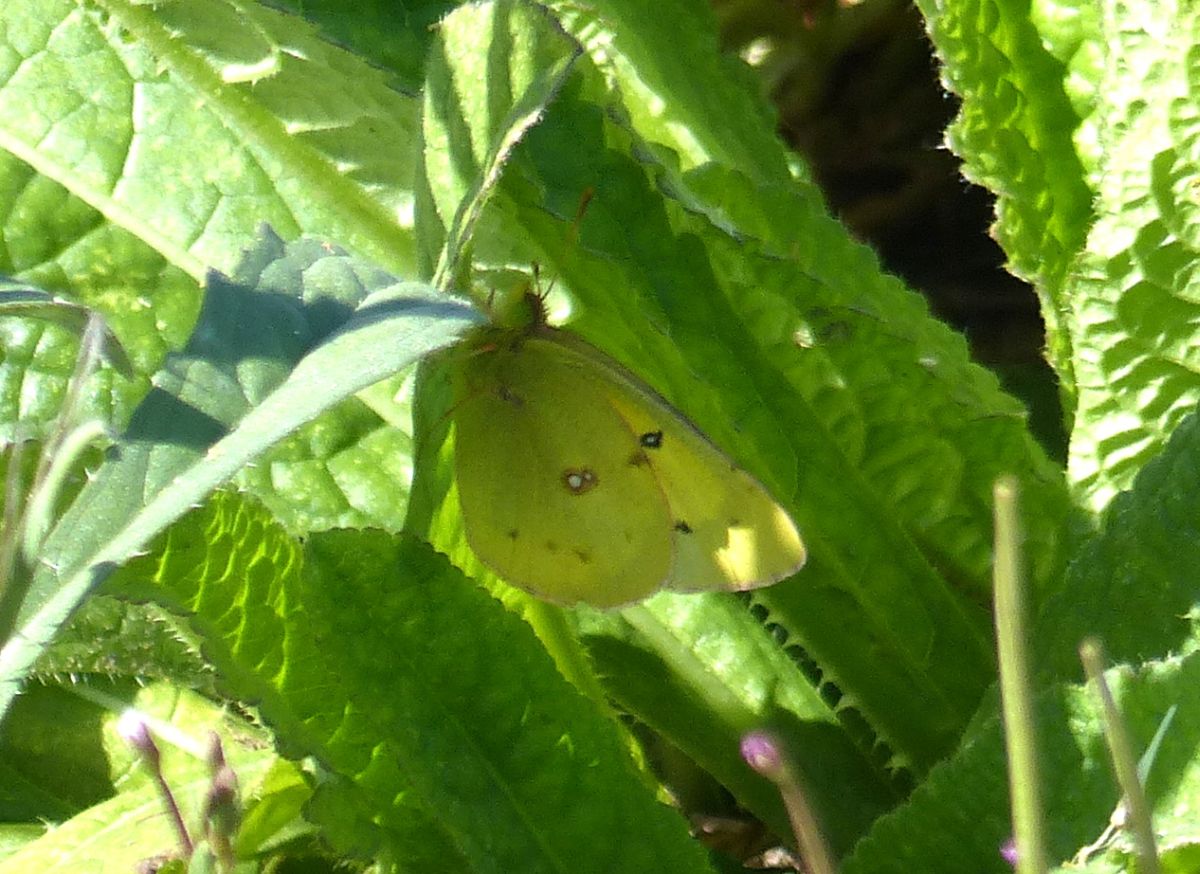
Orange Sulphur Colias eurytheme (Lep.: Pieridae) Aziza Cooper
Jeff Gaskin writes: Today, Aug. 17, at McIntyre Road Reservoir Kirsten Mills and I saw the following : 3 Purplish Coppers, 3 Painted Ladies, 3 Ringlets or Large Heaths, 3 Woodland Skippers and over 80 Cabbage Whites.
At the corner of Sayward Road and the Pat Bay Highway was one Pine White.
One Lorquin’s Admiral remains in my mother’s backyard on Wascana Street in the Gorge neighbourhood.
Nathan Fisk writes from Fort Rodd Hill Nursery: I don’t think I’ve ever seen a red grasshopper before so this one really caught my eye. It was resting among the Silene scoulerii. Thanks to Claudia Copley for identifying it as Melanoplus sp.
The small bee was just a few feet away feeding on White-topped Aster. [We thank Sean McCann for identifying it for us as a Small Carpenter Bee of the genus Ceratina.] I love that you can see its feet covered in pollen. The asters are quite the show with Bombus vosnesenskii, Woodland Skippers and one other Bombus species.

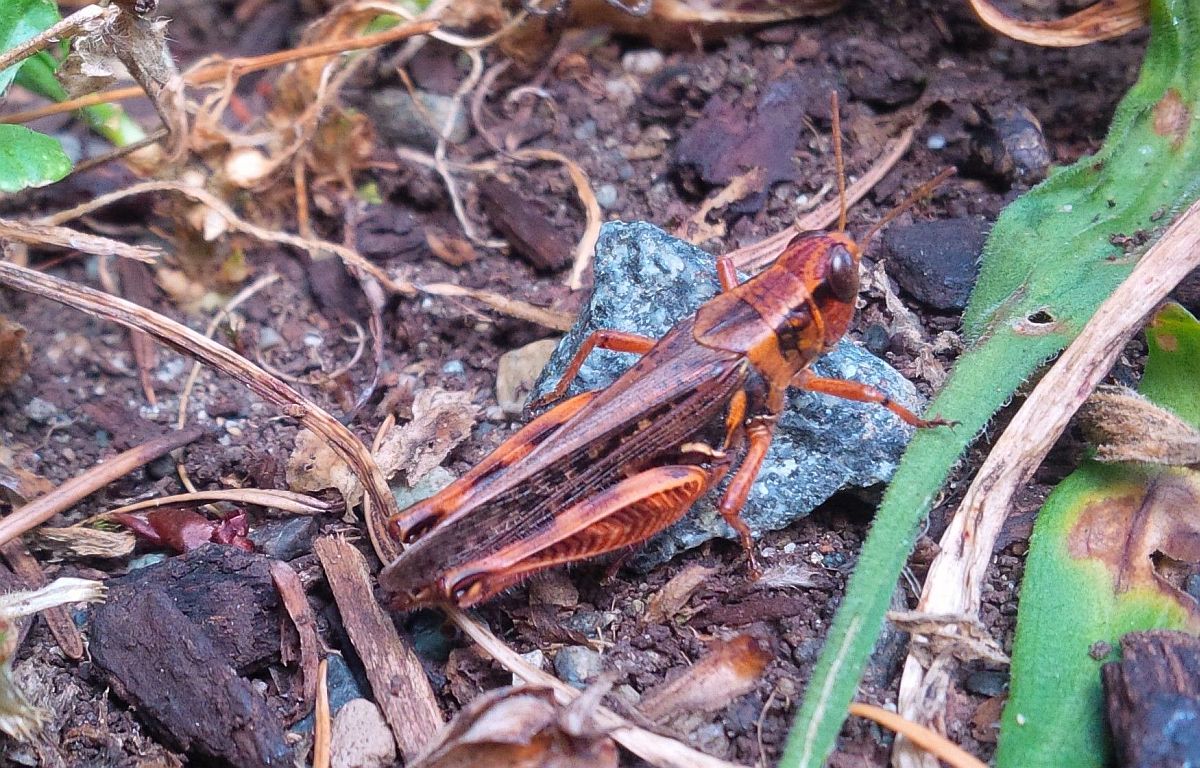
Grasshopper Melanoplus sp. (Orth.: Acrididae) Nathan Fisk

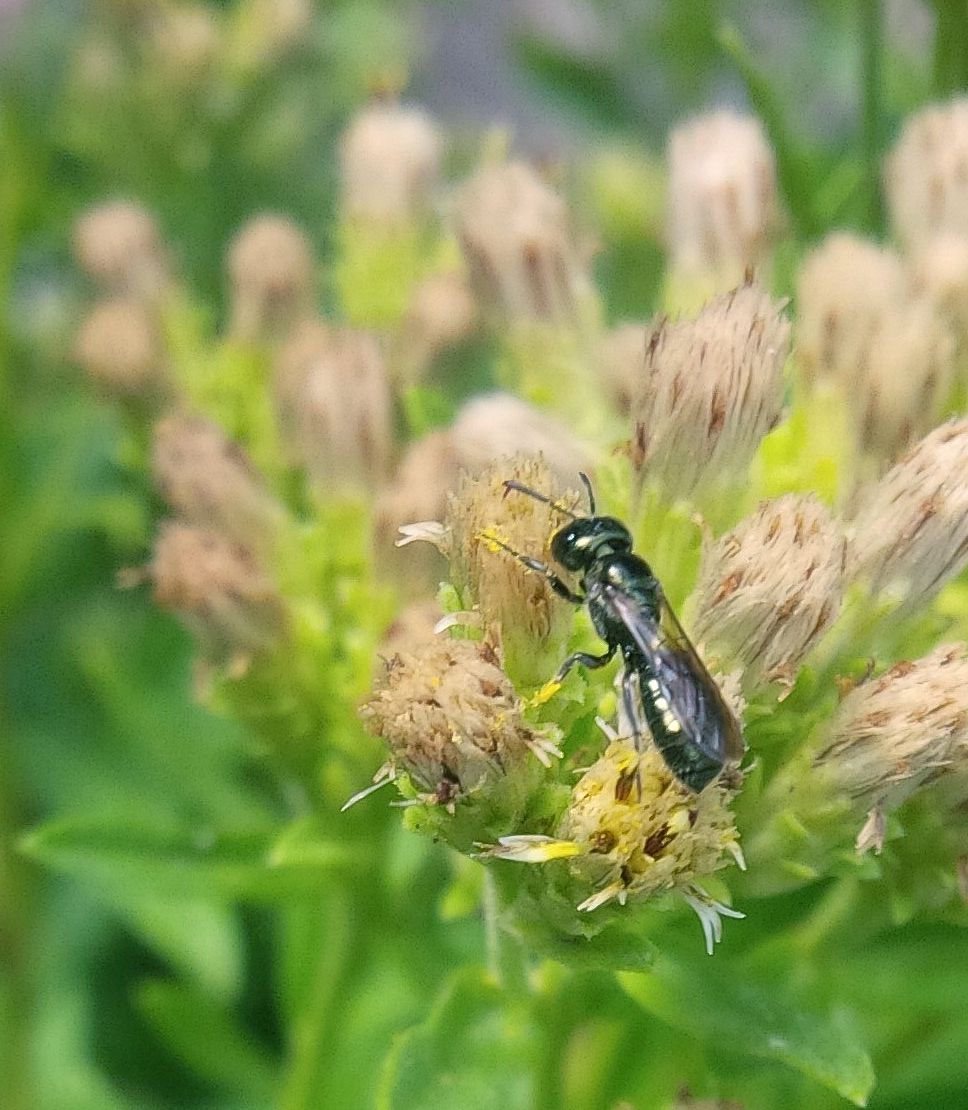
Small Carpenter Bee Ceratina sp. (Hym.: Apidae) Nathan Fisk
Dar Churcher sends a photograph of a beautiful plusiine moth, Autographa corusca, from her house in Colwood, August 17.

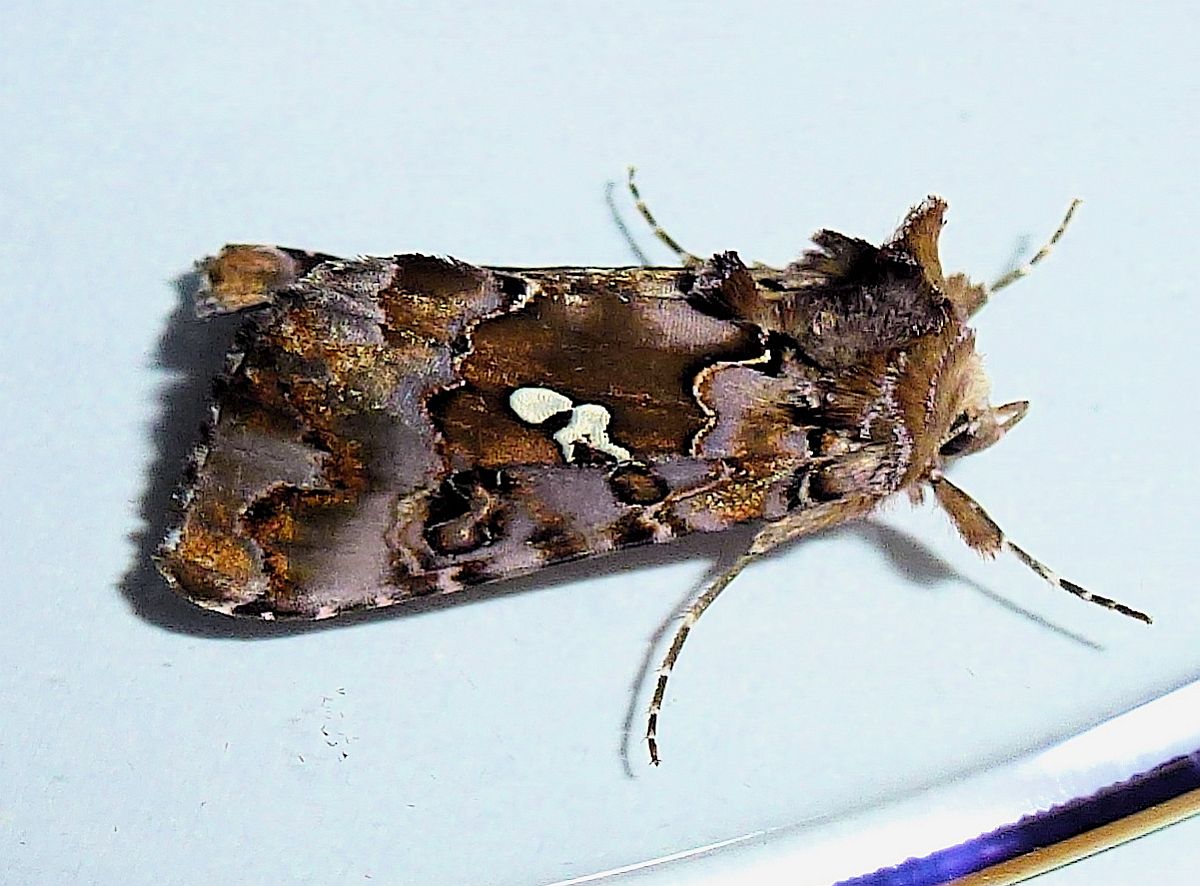
Autographa corusca (Lep.: Noctuidae – Plusiinae) Dar Churcher

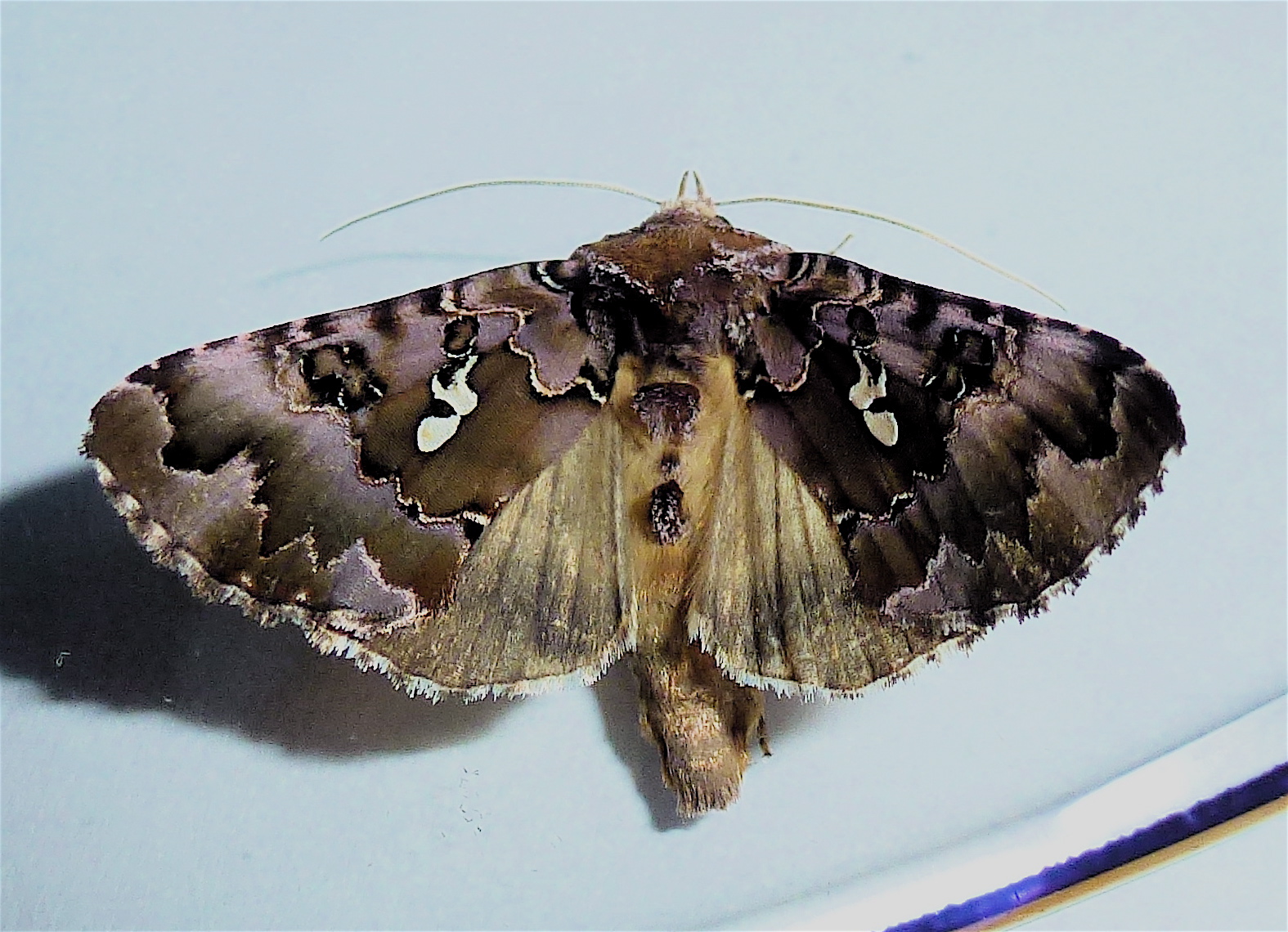
Autographa corusca (Lep.: Noctuidae – Plusiinae) Dar Churcher
